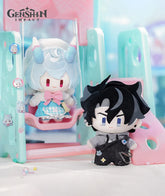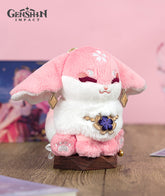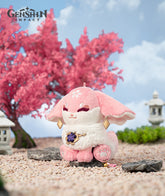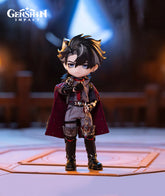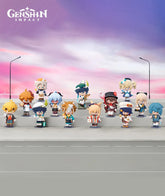Genshin Impact Four Shades Revealed: Analysis of the "The Gods' Limits"
Genshin Impact's brand-new Interlude Teaser is absolutely amazing! The Four Shades of Heavenly Principles have all appeared-the Rulers of Life, Death, Time, and Space are fully revealed. A grand story for Genshin Impact: Teyvat Chapter has now begun. In this article, let's break down the content of the new teaser and the details about the Four Shade Rulers.

1. Four Shades of Heavenly Principles in Genshin Impact
Since Genshin Impact's launch, depictions of the Four Shades of Heavenly Principles have been hidden in the corners of the story, revealing Teyvat's worldview. Before analyzing the PV, let's first discuss the settings and details of these four characters, as some travelers may not yet know what the Four Shades represent.
At the beginning of the story, Teyvat originally belonged to the Dragon Sovereigns, who built a flourishing civilization with advanced technology-until the "Eternal Throne" descended from the sky. The gods from the heavens took many forms, and today we commonly call them the "Heavenly Principles." They waged war against Teyvat's native rulers, the Dragon Sovereigns, emerged victorious, and thus became Teyvat's supreme rulers.

The Heavenly Principles created four luminous shadows of themselves, collectively called the "Four Rulers." As extensions of the Heavenly Principles, they hold supreme authority over Life, Death, Time, and Space, aiding in managing and sustaining Teyvat.
Note the distinction between the "Four Shade Rulers" and the "Seven Mortal Rulers": the Four Shades are higher-ranking rulers above the Seven Archons. Though both titles include "Ruler," the Seven Mortal Rulers govern only the "mortal realm." Even the strongest among them possess merely fragments of Phanes' power, while the Four Shades are akin to extensions of Phanes itself.In terms of power systems, the Seven Archons are currently limited to wielding single elements.

In contrast, the Four Shades' power clearly transcends the elemental system. Descriptions of them hint at their ability to wield all seven elements directly, not to mention their supreme authorities over Life, Death, Time, and Space.
Additionally, the game's five artifact types-Flower of Life, Plume of Death, Sands of Eon, Goblet of Eonothem, and Circlet of Logos-correspond to Life, Death, Time, Space, and the Heavenly Principles respectively.
2. Introduction and Analysis of the Genshin Four Shades
2.1 "Ruler of Life" Naberius

The "Ruler of Life," Naberius, wields the authority of Abiogenesis. Her design features abundant DNA double-helix structures, symbolizing life, while the XY pattern in her eyes corresponds to human chromosomes.
Her name, "Naberius," originates from the 24th demon in the Key of Solomon, a mystical text known for expertise in science, arts, and persuasion. Currently, we know she created the first Hydro Archon, Egeria.

She once lost an artifact-the "Heart of Naberius"-which was discovered by Rhinedottir and Albedo. Rhinedottir then sent Albedo to Mondstadt and vanished. Later, Alice informed Albedo, who revealed to us: "Rhinedottir has devoured the 'Ruler of Life' Naberius, and the two have merged into one."
In the new PV, the current Ruler of Life exhibits a "dual personality": half is the original Naberius, and the other half is Albedo's mother-Rhinedottir, the Gold-level Alchemist of Khaenri'ah and a founding member of the Hexenzirkel (codenamed "R").
A key visual detail: when Rhinedottir dominates, the Flower of Life generated by the DNA helix behind her is golden; when Naberius speaks, it shifts to blue. This transition suggests Naberius not only exists within Rhinedottir's psyche but may also manifest externally-her dialogue bubbles could be physically real.
2.2 "Ruler of Death" Ronova

The "Ruler of Death," Ronova, holds authority over death. She previously interacted with us during the Natlan Archon Quest. In Natlan, she guided the Night God to establish the Night Kingdom and made a pact with the first Pyro Archon to set the rules of the Ode of Resurrection. She even left a portion of her power within the Pyro Archon's throne. Her assistance to Natlan displeased the Heavenly Principles, leading her to become somewhat self-destructive.

Additionally, during the Khaenri'ah Cataclysm 500 years ago, it was Ronova who cast the curse of immortality. At the end of the Natlan quest, The Captain, burdened by this curse, attempted to sacrifice himself in place of Mavuika, which again challenged Ronova. To claim The Captain's life as payment for death, she would first need to lift the curse-but Ronova insists the curse must persist, as she must abide by this rule. This reflects the PV's title: "The Gods' Limits."
Ronova's design features two distinct traits: wings and eyes, reminiscent of Inazuma's statues. However, aside from the wings and eyes, the Inazuma statue differs significantly-lacking Ronova's signature long hair and black veil headdress. Instead, its hooded appearance resembles the "Ruler of Life," Naberius.

The name "Ronova" originates from the 27th demon in the Ars Goetia, depicted as a monster wielding a scepter that harvests the souls of dying humans and animals.
2.3 "Ruler of Time" Istaroth

The "Ruler of Time," Istaroth, primarily holds authority over "time." Her design features circular rings on her head and wrists. These symbolize the cycle of time and evoke imagery of clock dials. The hanging ornaments around her correspond to clock hands, while small vertical lines arranged in sequence depict spiraling history and future. Viewed as a whole, these elements form a veil-like headdress, which is quite intriguing.

The name "Ruler of Time" Istaroth originates from the 29th demon in Solomon's Ars Goetia, often described as knowledgeable and capable of revealing the past and future.
Istaroth has many notable deeds. For example, in the recent Traveler storyline, she manipulated time to guide the reunion of the Traveler siblings, indirectly leading to Khaenri'ah's downfall. She also assisted Raiden Ei in planting the Sacred Sakura in Inazuma, allowing it to sprout in the past.
In Mondstadt, there exists an ancient ritual site called the Thousand Winds Temple. The PV reveals that Istaroth shares the same voice actors across all four language versions as Venti. Thus, Istaroth and Venti must be connected-though the exact nature of their relationship remains unclear.
2.4 "Ruler of Space" Asmoday

The characteristics of her power are red four-pointed stars and cubes. The name of the "Ruler of Space," Asmoday, originates from the 32nd demon in Solomon's 72 Demons. Besides her encounter with the twins at the beginning of the game, she also participated in the destruction of Khaenri'ah. In Khaenri'ah, red cubes symbolizing her power can be seen.
Additionally, in the latest Traveler storyline event, a red four-pointed star portal symbolizing the "Ruler of Space" appeared.
3. Interlude Teaser "The Gods' Limits" Analysis
After discussing the basic settings of the "Four Shades," let's look at this PV. We learn that the Four Shades hold regular meetings, but this time, the "Ruler of Space," Asmoday, was absent-something unprecedented since the Heavenly Principles cast their shadows.
The three then entered Asmoday's space to search for her. Here, Rhinedottir, driven by curiosity, began an experiment and created life-flowers, birds, and even humans. As the "Ruler of Time," Istaroth already knew Asmoday wasn't there. So while Ronova searched around, Istaroth, to pass the time, gave these lives a history. This led to the short story at the PV's opening.

The opening segment of the PV introduces information about the "Four Shades" and their "unreasonable" authority through an elder's narration. When the elder mentions the "Ruler of Space," an anomaly occurs-she is torn apart by space while the other students remain unharmed. This is because the Four Shades dislike others discussing their names. In Enkanomiya (Byakuyakoku), people dared not directly write the name of the "Ruler of Time," Istaroth; instead, they wrote it backward in their books. Thus, speaking of the "Ruler of Space" within her own space naturally invites backlash from space.
The elder recounts the story of the twin protagonists being separated by Asmoday at the game's beginning. Remember, this history was bestowed by Istaroth. The fact that the elder speaks of this before the Four Shades indicates they are aware of the twins' existence.

Then, a red light flashes from the sky, granting death to the life here. Ronova returns after searching and sees the other two never bothered to look for Asmoday. Ultimately, none of the three find Asmoday in this space, so Ronova declares the space's death, and the three prepare to leave.
It becomes clear that the space they occupy is merely one of Asmoday's countless cubes. Each cube is a world. Additionally, background cosmic debris suggests this location is likely beyond the False Sky. Does this imply the Four Shades' authority and power extend beyond Teyvat, confined within the False Sky?
From another perspective, this reveals relationships among the Four Shades. The powers of the Four Shades are mutually constrained: without the "Ruler of Space," the others struggle to wield their authority.

The "Ruler of Death" can end a space's life, while the "Ruler of Time" can resurrect beings slain by Ronova. Yet without the "Ruler of Life" creating life, the "Ruler of Time" cannot bestow history, future, knowledge, or even memories upon anyone. It feels as though there exists a web of mutual constraints binding the four of them.
The three who failed to find Asmoday returned to the meeting room. Istaroth then proposed her view-could Asmoday have betrayed them? If so, searching for her would be pointless. Keep in mind, this was the "Ruler of Time's" perspective. She might have witnessed the betrayal in some timeline before speaking, so this likely wasn't baseless speculation.

Rhinedottir, upon hearing this, found the argument novel and remarked that betrayal was still preferable to being devoured-as if hinting her own situation was worse than betrayal. I believe this implies: the Four Shades act under certain rules; even betrayal remains within these rules. But after Rhinedottir devoured Naberius and seized the "Ruler of Life's" authority, she no longer needed to follow the Heavenly Principles' rules, which could lead to unforeseen consequences.
However, Rhinedottir's current situation isn't urgent. The PV explains: "When Rhinedottir tries to act out of line, Naberius whispers in her ear to stop her." Interestingly, Rhinedottir respects this, heeds her advice, and still fulfills her duties as the "Ruler of Life." Naberius seems satisfied with this arrangement. Thus, Rhinedottir-a powerhouse of Khaenri'ah-is, to some extent, constrained by the Heavenly Principles.

Ronova then interrupted their discussion about Asmoday's betrayal, stating betrayal wasn't simple. "We are shadows, projections of the Heavenly Principles herself. To betray, she must love her new master more than herself." The phrase "more than herself" implied "more than the Heavenly Principles."
Who would Asmoday choose as a new master? Since the Heavenly Principles is a Descender-level being, this new master must also be a Descender. Here, some might think of the Traveler-the "Fourth Descender." And in Teyvat, we've befriended Paimon, our closest companion. While her design suggests ties to the Heavenly Principles faction, there is currently no credible information or logically complete speculation about Paimon's identity. Thus, her origins remain unclear.

Regarding whether Asmoday has betrayed them, one perspective might yield useful clues-the Villainous Protagonist's arrival in Khaenri'ah. This was achieved because the "sky" responded to the summon. Which of the Four Shades does this "sky" refer to? Could it be the "Ruler of Space" herself? After all, controlling the landing point in Khaenri'ah resembles spatial authority. Isn't this equivalent to providing Khaenri'ah with a means to harness Abyssal power against the Heavenly Principles?
Therefore, without Istaroth's interference-using the key to lure the Villainous Protagonist toward the Traveler-Khaenri'ah's downfall might not have been so easily achieved. In summary, betrayal among the Four Shades likely exists. At least the one who sent the Villainous Protagonist to Khaenri'ah was opposed to Istaroth at the time.
Another point also points to Asmoday: Did Istaroth guide the Villainous Protagonist to find the Traveler in hopes of helping the twins leave Teyvat? But in the end, Asmoday intercepted them. Here, it's crucial to remind Travelers that the game's opening scene-where the twins attempt to leave Teyvat and are separated by Asmoday-occurs after the Khaenri'ah cataclysm. The twins arrived in Teyvat much earlier. By then, the Villainous Protagonist had already experienced much in Khaenri'ah, while the Traveler remained in slumber.

It was precisely because of Khaenri'ah's disaster that Teyvat plunged into chaos, prompting the Villainous Protagonist to awaken the Traveler and flee. This is the scene shown at the game's beginning. As for how the twins first arrived in Teyvat and why the Villainous Protagonist landed precisely in Khaenri'ah-these remain unknown. For now, it's merely speculation tied to Asmoday.
The scene shifts. Istaroth sensed someone watching Ronova-it was The Jester. The Jester was once a court mage of Khaenri'ah and witnessed the "Ruler of Death" casting the curse of immortality upon Khaenri'ah, so he holds a deep grudge against the gods. Rhinedottir mentioned The Jester was her old acquaintance since he was one of The Five Sinners of Khaenri'ah.

Next, after discussing The Jester, the three shifted their focus to Snezhnaya, where he now resides, and spoke of the Tsaritsa's rebellion. Here, Ronova's evaluation of the Tsaritsa bordered on arrogance, highlighting the Four Shades' overwhelming power compared to the Seven Archons. From Rhinedottir's perspective, she reasoned that since the Heavenly Principles now slumber, she too would seize such a rare chance to rebel.
As soon as Rhinedottir voiced this thought, Naberius immediately countered it. Ronova, the most dutiful among them, believed it was time to intervene against the Tsaritsa's actions-within the bounds permitted by the "rules." These "rules" likely refer to constraints the Four Shades must obey, echoing the PV's title "The Gods' Limits."

Then, a gust of wind swept through the Four Shades' divine realm. Istaroth, as the "Thousand Winds," noticed this. It was hard not to associate this wind with the Anemo Archon Venti-almost as if he were sending a warning. The scene emphasized this with close-ups of Istaroth and later Rhinedottir. Remember, Rhinedottir holds another identity: she is a founding member of the Hexenzirkel (Witch Council), codenamed "R." The Hexenzirkel once challenged the Anemo Archon but was subdued by Venti's music. Moreover, Venti keeps the Hexenzirkel's summoning artifact, the "Lantern." Thus, these two close-ups further strengthen the link to Venti.

The scene then shifts to the final segment of the PV, focusing on Nod-Krai. Here, we glimpse scenes from the upcoming 6.0 version of Nod-Krai, though the exact locations remain unclear for now.
Returning to the Tsaritsa's rebellion-the very matter the three Shades decided to intervene in-The Jester outright declares their intent to "kill a god." But which god? The Heavenly Principles or one of the Four Shades? And by what means? This will likely be a central focus for Nod-Krai and Snezhnaya in future versions.

The Jester reiterates the PV's theme: "This is the gods' limits." I believe this phrase carries dual meanings:
- Divine Arrogance: Gods never envision their own demise;
- Rule-Bound Constraints: Even the Four Shades must adhere to fixed "rules." When unforeseen events occur or rules are broken, these very constraints become shackles limiting the gods themselves.
At the PV's conclusion, new Fatui units appear in Nod-Krai, hinting at unrest orchestrated by the "Frostmoon Child." Crucially, the Fatui Harbinger "Damselette" emerges within Nod-Krai's borders. Fatui troops are dispatched under orders to retrieve her. This suggests the Tsaritsa places high importance on Damselette-could she be the "weapon" meant to slay a god?

Notably, Damselette exhibits glitch-like visual effects. Similar distortions appeared on The Wanderer and The Knave, yet the manifestations differ subtly among all three.

This concludes our full analysis of the interlude PV "The Gods' Limits". It contains massive information and is quite detailed. If you enjoyed it, feel free to keep following our articles. And of course, don't miss out on the Genshin Impact merchandise available on our site!















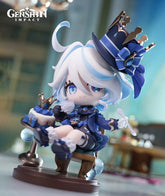
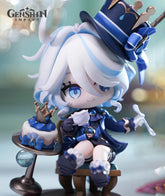

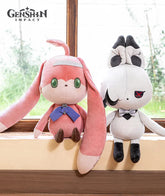

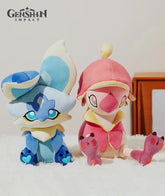
![[Official Merchandise] Genshin Impact Theme Vision Keychain Charm](http://genshinfans.com/cdn/shop/files/ZT01_4ff643a3-f4c7-4e69-949d-97312b5da85d_165x.jpg?v=1722241611)
![[Official Merchandise] Wanderer Scaramouche Cat Hanging Plush Toys](http://genshinfans.com/cdn/shop/files/zt-05_165x.jpg?v=1698818423)
![[Official Merchandise] Wanderer Scaramouche Cat Hanging Plush Toys](http://genshinfans.com/cdn/shop/files/zt-06_165x.jpg?v=1698818424)


![[Official Merchandise] Genshin Impact Slime Plush Toys](http://genshinfans.com/cdn/shop/products/ZT06_165x.jpg?v=1691978287)
![[Official Merchandise] Genshin Impact Slime Plush Toys](http://genshinfans.com/cdn/shop/files/ZT02_6137d7a6-4ee1-4a82-9495-4a12b1032ea2_165x.jpg?v=1691977956)
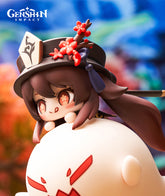
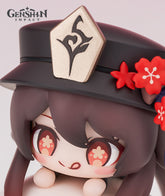
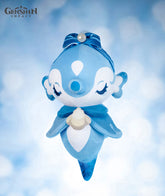

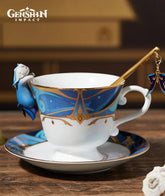
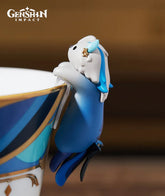
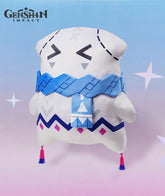

![[Official Merchandise] Kaedehara Kazuha Impression Bracelet](http://genshinfans.com/cdn/shop/files/ZT02_cacb626a-33db-414d-aab1-63e59b0a0ba8_165x.jpg?v=1698747523)
![[Official Merchandise] Kaedehara Kazuha Impression Bracelet](http://genshinfans.com/cdn/shop/files/ZT04_79fecbdd-ac05-4a1a-9488-4814e86eeee1_165x.jpg?v=1698747523)

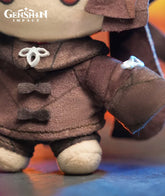
![[Official Merchandise] Arlecchino Impression Afternoon Tea Cup and Saucer Set](http://genshinfans.com/cdn/shop/files/Arlecchino-Impression-Afternoon-Tea-Cup_165x.jpg?v=1714383254)
![[Official Merchandise] Arlecchino Impression Afternoon Tea Cup and Saucer Set](http://genshinfans.com/cdn/shop/files/Arlecchino-Impression-Afternoon-Tea-Cup2_165x.jpg?v=1714383255)
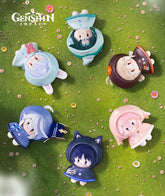
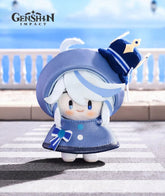
![[Official Merchandise] Alhaitham Impression Tote Bag of Forest and Sand Collection](http://genshinfans.com/cdn/shop/files/Alhaitham-Genshin-impact-Tote-Bag_165x.jpg?v=1718094435)
![[Official Merchandise] Alhaitham Impression Tote Bag of Forest and Sand Collection](http://genshinfans.com/cdn/shop/files/Alhaitham-Genshin-Tote-Bag_165x.jpg?v=1718094435)
